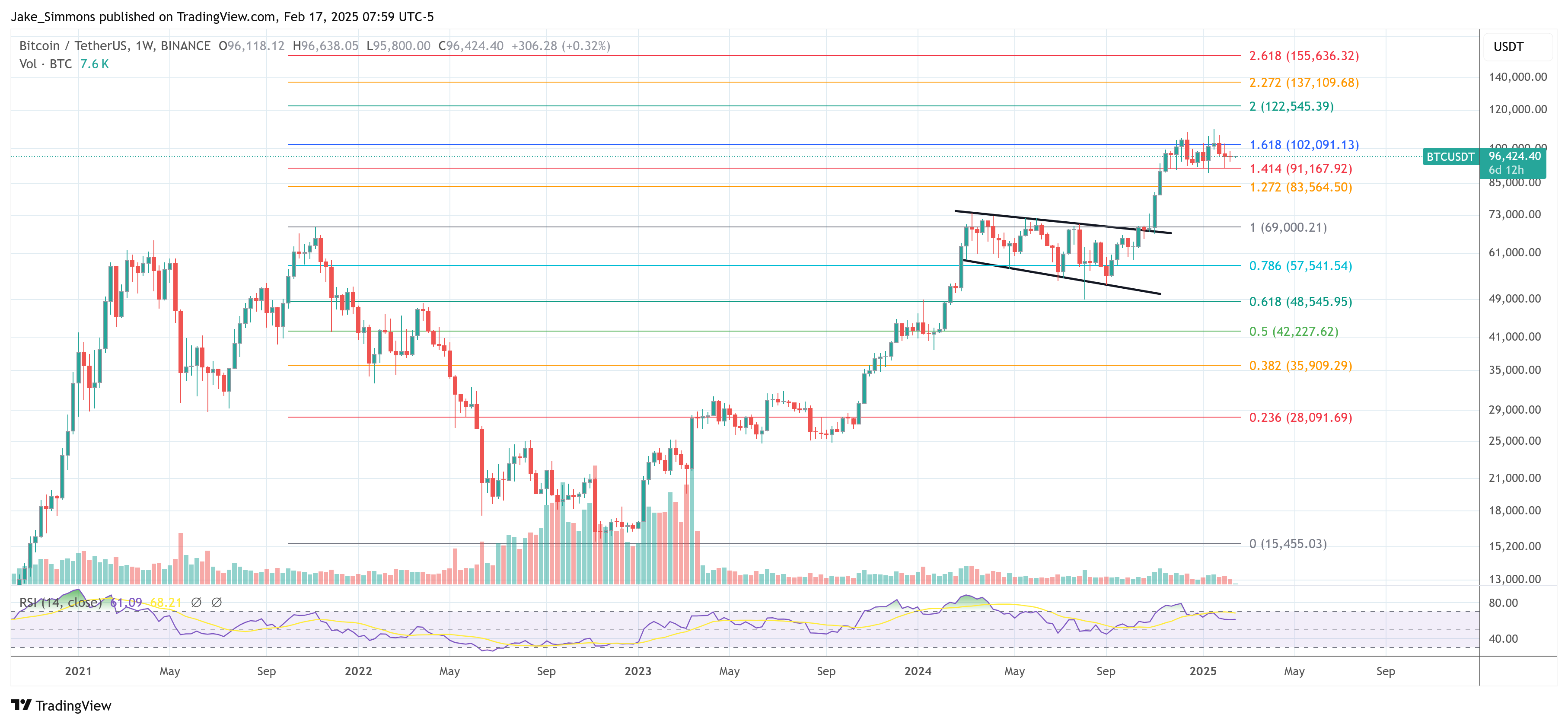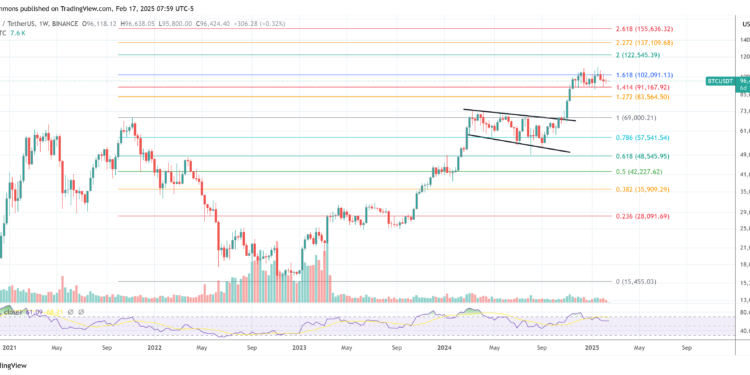[ad_1]
A contemporary infusion of liquidity from the US Treasury Common Account (TGA) is making waves amongst market observers, with some analysts speculating this may very well be a key set off for Bitcoin’s subsequent main transfer. Whereas the Federal Reserve continues its Quantitative Tightening (QT) program, the TGA’s newest money injection—pegged at as much as $842 billion—has sparked debate over whether or not we’re witnessing a stealth model of quantitative easing, generally known as “Not QE, QE.”
Fed’s “Not QE, QE”
In a post shared on X, macro analyst Tomas (@TomasOnMarkets) supplied a breakdown of how this dynamic is enjoying out: “‘Not QE, QE’ has formally began. A liquidity injection that would whole as much as $842bn from the US Treasury Common Account started this week. Functionally, that is much like Quantitative Easing, however on a brief foundation.”
The backdrop for this liquidity surge is the binding $36 trillion US debt restrict. With no new debt issuance allowed till a contemporary debt ceiling settlement is reached, the Treasury is pressured to depend on funds from the TGA to cowl authorities spending obligations. This attracts down the TGA steadiness—$842 billion as of Tuesday, February 11—successfully injecting liquidity into monetary markets.
Associated Studying
Based on Tomas, the Treasury’s “practice” of TGA spending began in earnest on Wednesday, February 12: “From my understanding, the official ‘debt ceiling-induced’ Treasury Common Account (TGA) drawdown started on Wednesday February 12… This practice is now in movement and won’t cease till lawmakers come to a brand new debt ceiling settlement.”
He tasks that the primary section of this course of will seemingly contain round $600 billion in injections between February 12 and April 11. After the April tax season, a brief replenishment of the TGA may happen, however till a brand new debt ceiling deal is reached, the Treasury will presumably proceed to spend down present money reserves.
Whereas some observers are hailing this improvement as a de facto spherical of QE, Tomas underscores that the ultimate internet impression depends upon two essential drains on liquidity: The Federal Reserve is rolling off property at about $55 billion per thirty days, which Tomas expects to proceed at the very least via the following FOMC assembly in March. Over two months, that interprets to an estimated $110 billion liquidity discount.
With the Treasury issuing fewer T-bills attributable to debt-ceiling constraints—termed “internet unfavourable T-bill issuance”—cash market funds might have fewer short-term authorities securities to purchase. This shortage may immediate them to park additional cash within the Fed’s Reverse Repo facility, which successfully drains liquidity from the broader market.
Tomas notes: “This will incentivize cash market funds to park money within the Fed’s Reverse Repo, probably pushing this chart up… Reverse Repo utilization growing could be a liquidity drain, as cash could be shifting away from markets and into the Reverse Repo facility on the Fed.”
Total, the true scale of the TGA-based stimulus stays unsure. Final week, internet injections into the system had been estimated at $50 billion, a determine that would fluctuate within the weeks forward as QT and Reverse Repo demand evolve.
One other key piece of the puzzle is the continuing political impasse over the debt ceiling. Regardless of requires bipartisan cooperation, divisions throughout the slim Republican majority—mixed with broad Democratic opposition—complicate prospects for a swift decision.
Associated Studying
Home Republicans lately put ahead a plan tying “trillions of {dollars}” in tax cuts to elevating the debt ceiling. Nonetheless, the measure’s passage is way from assured, as deeply conservative members object to any debt restrict improve on precept. Previous will increase have usually required cross-party assist, indicating a probably extended standoff.
“This comes down on the shoulders of Home Speaker Mike Johnson, as he makes an attempt to rally lawmakers behind the plan,” Tomas notes, reflecting widespread skepticism about whether or not adequate votes might be secured.
Will Bitcoin Profit?
For Bitcoin merchants, these liquidity ebbs and flows usually correlate with broader danger urge for food—Bitcoin has traditionally seen upward value actions in periods of unfastened financial coverage and liquidity injections. Though the Federal Reserve has signaled no quick halt to QT, the TGA drawdown’s near-term flood of money may nonetheless buoy danger property, together with Bitcoin.
Exactly how a lot of this “Not QE, QE” trickles into Bitcoin stays to be seen. But, for market contributors watching each day internet liquidity metrics, the interaction between TGA drawdowns, QT, and Reverse Repo utilization has turn out to be a central storyline. Because the standoff in Washington continues, the Bitcoin area can be monitoring each uptick and downtick within the Fed’s liquidity charts—hoping it’d simply flip the change on Bitcoin’s subsequent massive breakout.
At press time, Bitcoin traded at $96,424.

Featured picture created with DALL.E, chart from TradingView.com
[ad_2]
Source link


